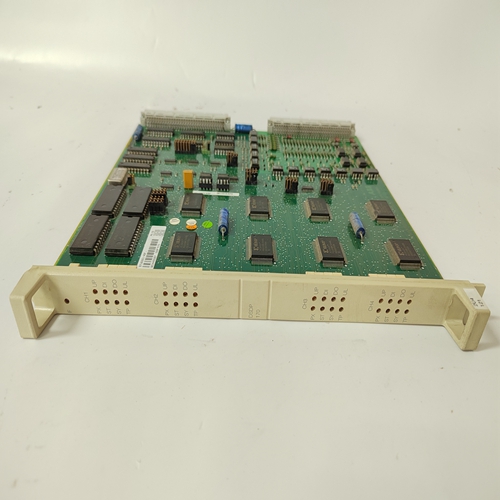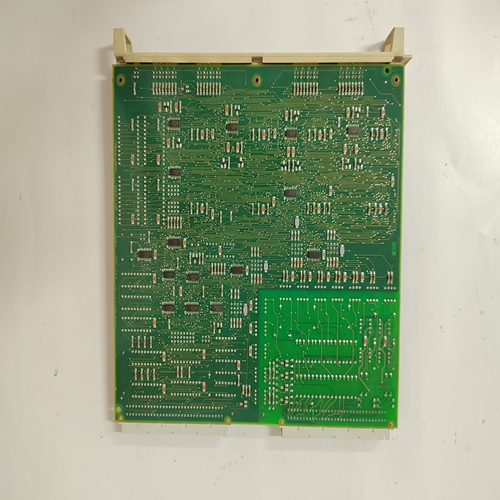
57160001-ADF工业输入模块
用户联系人可用于监控FIP网络上的设备的故障,或通过使用FIP故障定位参考对其进行编程,无故障状态,如下所示。FIP总线控制器最初将所有用户故障触点设置为[故障]。之后用户状态(STAT_IO和/或网络状态列表)从网络中的用户故障触点可以反映用户的实际状态。这个发生这种情况之前的时间长度因配置而异,但通常在CPU进入运行模式后30-60秒的范围。
这些用户故障触点汇总了I/O故障中报告的用户故障PLC中的表。如果I/O故障记录在I/O错误表中,且仍处于挂起状态,则用户故障触点已设置。用户故障触点仅在以下情况下清除:
没有订户故障。I/O故障是由于在用户的STAT_ IO或网络存在列表。的用户故障触点
FIP总线控制器本身在任何用户故障接触其遥控器时设置设置订户。
故障[故障]触点将检测远程用户中的任何故障。用于远程I/O设备,故障是任何网络故障(冗余总线故障或设备丢失)或任何故障在单个I/O模块中。对于通用设备,故障是任何网络故障(冗余总线故障或设备丢失)。如果参考存在故障,则触点传递功率流。故障定位参考与用户故障触点一起使用的故障定位参考的格式为:F_ rsmmm。
前两位数字始终表示FIP总线的机架和插槽地址控制器:
r是FIP总线控制器的机架号,必须为0s是FIP总线控制器的插槽号
对于所有模块和总线控制器本身,以下1至3位数字(前导零未使用)显示受影响的FIP设备的订户ID(000到255)。例如,F_0328表示机架0、插槽3、用户128。报警触点指示模拟参考何时达到其报警限值之一。
分别检测和报告高报警限值和低报警限值。高报警触点[HIALR]指示配置的高报警设置何时已设置
达到或超过。低报警触点[LOALR]指示何时配置
已达到或超过低报警设置。报警触点由远程I/O设备,并报告给相关验证器中的FIP总线控制器
模拟数据。报警不被视为故障条件,也不报告在I/O故障表中。报警也不会影响用户或点故障触点。
Subscriber contacts can be used to monitor devices on the FIP network for their fault or
no fault status by programming them with FIP fault-locating references as shown below.
The FIP Bus Controller initially sets all Subscriber Fault contacts to [FAULT]. Only after
the subscriber status (STAT_IO and/or Network Presence List) is retrieved from the
network can the Subscriber Fault Contacts reflect the actual state of the subscribers. The
length of time before this occurs varies with each configuration but is normally in the
range of 30–60 seconds after the CPU enters RUN mode.
These Subscriber Fault Contacts summarize subscriber faults reported in the I/O Fault
Table in the PLC. If an I/O Fault is logged in the I/O Fault Table and it is still pending, the
Subscriber Fault Contact is set. The Subscriber Fault Contact is cleared only when there
are no subscriber faults. I/O Faults are logged as a result of errors reported in either the
Subscriber’s STAT_IO or the Network Presence List. The Subscriber Fault Contact of the
FIP Bus Controller itself is set when any of the Subscriber Fault Contacts for its remote
subscribers are set.
A fault [FAULT] contact will detect any fault in a remote subscriber. For remote I/O
devices, a fault is any network fault (redundant bus failure or loss of device) or any fault
in an individual I/O module. For generic devices, a fault is any network fault (redundant
bus failure or loss of device). The contact passes power flow if the reference has a fault.Fault Locating References
The format of the fault-locating references used with Subscriber Fault Contacts is
F_rsmmm. The first two digits alway indicate the rack and slot address of the FIP Bus
Controller:
r is the rack number of the FIP Bus Controller, which must be 0
s is the slot number of the FIP Bus Controller
For all modules and for the Bus Controller itself, the following 1 to 3 digits (leading zeros
are not used) show the Subscriber ID of the affected FIP device (000 to 255).
For example, F_0328 represents rack 0, slot 3, subscriber 128.Alarm Contacts indicate when an analog reference has reached one of its alarm limits.
Both the high and low alarm limits are detected and reported separately. The High
Alarm Contact [HIALR] indicates when the configured high alarm setting has been
reached or exceeded. The Low Alarm Contact [LOALR] indicates when the configured
low alarm setting has been reached or exceeded. Alarm Contacts are generated by the
remote I/O device and are reported to the FIP Bus Controller in the validator associated
with the Analog data. Alarms are not considered fault conditions and are not reported
in the I/O Fault Table. Alarms also do not affect the Subscriber or Point Fault Contacts.











